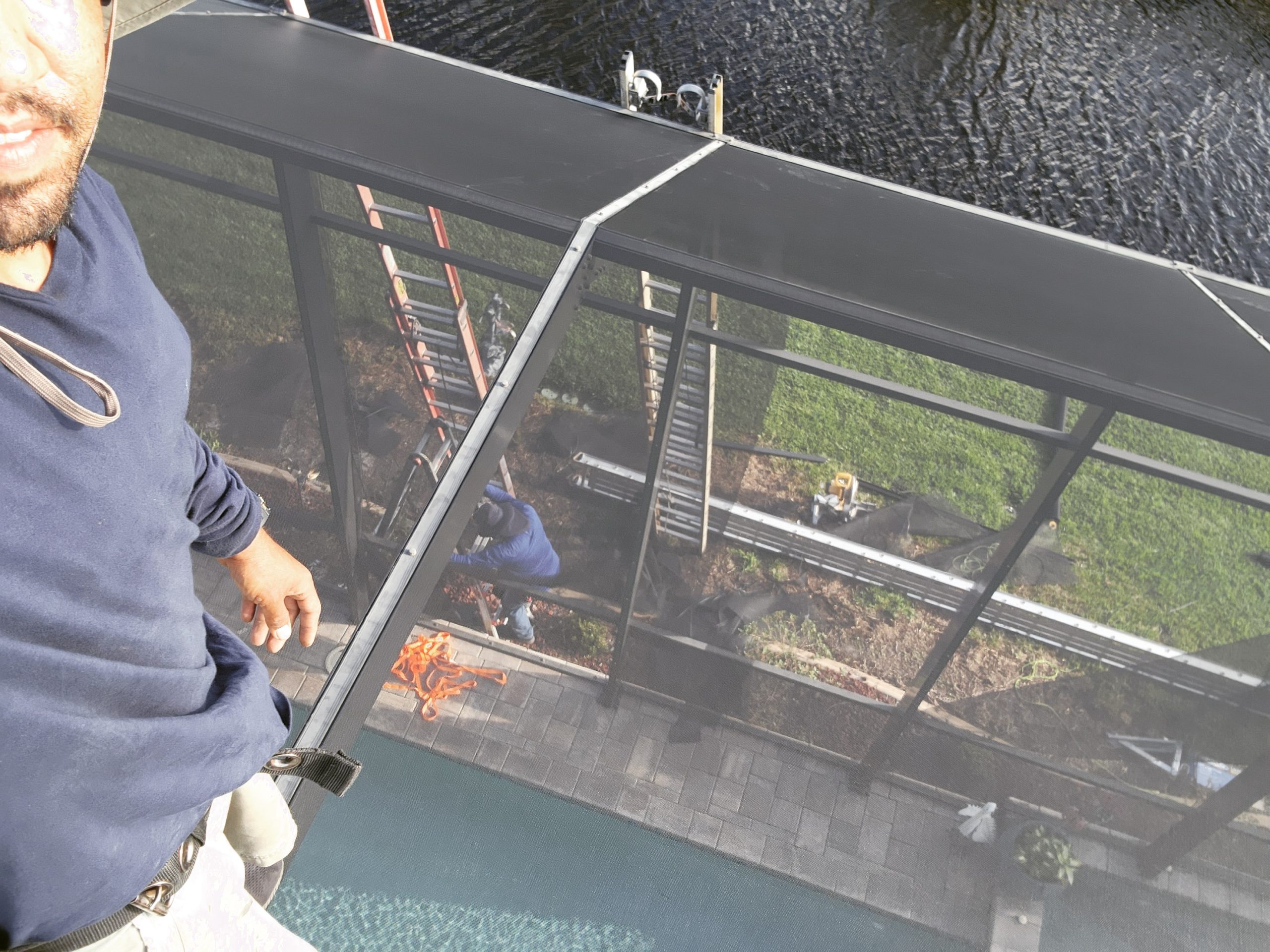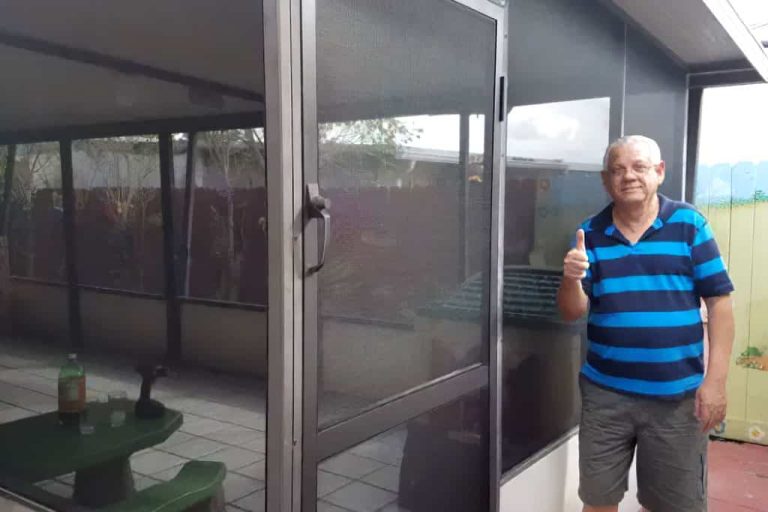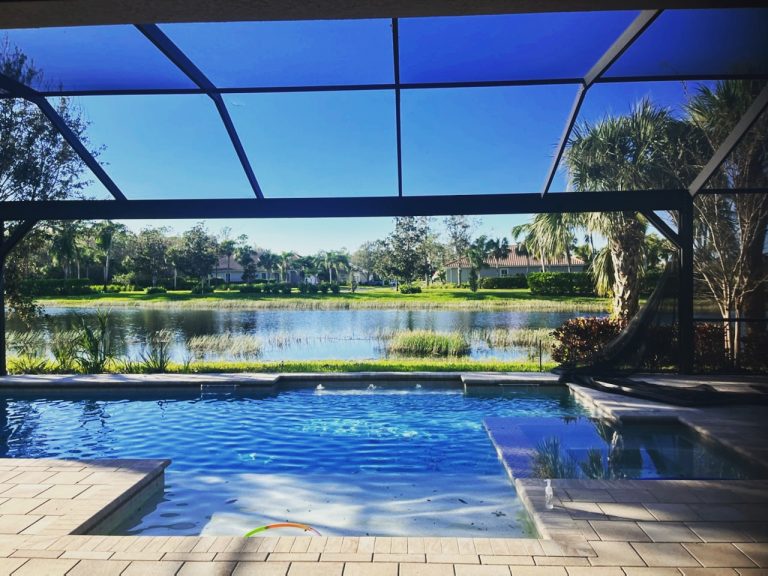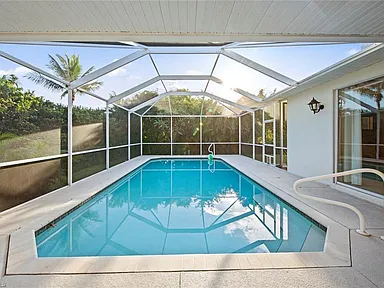Screen repair seems like a simple task at first glance. However, many homeowners make costly mistakes that can lead to bigger issues down the line. If you live in Naples, Marco Island, Bonita Springs, or nearby cities in Southwest Florida, and are considering repairing your screens yourself, it’s essential to be aware of the most common pitfalls. A well-maintained screen enclosure is vital for keeping out pests, debris, and harmful UV rays, so avoiding these mistakes can save you time, money, and frustration.
1. Using the Wrong Screen Material
One of the most common mistakes homeowners make is choosing the wrong type of screen material for their specific needs. Not all screens are created equal, and what works for one home may not be ideal for another. For example, a typical bug screen may suffice in most cases, but if you live in a city like Marco Island or Fort Myers, where high winds and heavy storms are common, you’ll want something more durable.
Solar screens, pet-resistant screens, and heavy-duty screens all have different functions. Using the wrong type can lead to premature wear and tear or even ineffective protection. Always research the best type of screen material for your location, climate, and specific needs.
2. Improper Screen Tension
Another mistake that’s frequently made is failing to properly stretch the screen during installation. If the screen is too loose, it will sag over time, and not only will it look unsightly, but it also won’t offer adequate protection. On the other hand, pulling the screen too tightly can cause unnecessary stress on the frame, leading to damage or warping over time.
In areas like Bonita Springs and Estero, where humidity can expand or shrink screen material, improper tension can accelerate wear and cause screens to sag or tear prematurely. For the perfect balance, it’s best to trust a professional who knows how to install screens with just the right amount of tension.
3. Neglecting Frame Damage
When repairing a screen, many homeowners focus solely on the fabric and ignore the condition of the frame. However, if the frame is bent, rusted, or corroded, it won’t properly hold the screen material in place, making it prone to loosening or tearing in the near future.
Living near the coast in places like Naples or Sanibel, the salty air can cause corrosion, which weakens the structure over time. Before repairing the screen, always inspect the frame. If there are signs of rust or structural damage, it’s best to replace or reinforce the frame to ensure a longer-lasting repair.
4. Inadequate Tools and Materials
Using low-quality materials or inadequate tools is another common mistake that can lead to poor results. Homeowners might use old spline (the rubber material used to hold the screen in place) or substandard screen mesh, thinking it will save money. However, these shortcuts often lead to the screen tearing again shortly after installation.
For residents of Cape Coral or Fort Myers Beach, where high winds and intense sun exposure are common, investing in high-quality materials is crucial. For example, using UV-resistant screens can prevent fading and deterioration, while durable spline ensures the screen stays firmly in place.
5. Skipping Measurements
A frequent mistake made during DIY screen repair is failing to take accurate measurements. Homeowners might assume they know the dimensions of their screens or rely on estimates, only to find out the new screen is too short, too wide, or improperly fitted.
In areas like Lehigh Acres or Naples, where outdoor living spaces are often a significant part of the home, accurate measurements are essential to ensuring that your screens provide maximum coverage and protection. Taking the time to measure properly will save you from the frustration of needing to redo the repair.
6. Overlooking Weather-Resistant Options
In Florida, weather resistance is key. Whether it’s a hurricane in Marco Island or a heavy rainstorm in Fort Myers, the elements can wreak havoc on poorly installed or inappropriate screens. One mistake homeowners make is choosing screen materials that aren’t weather-resistant. Standard screens may not hold up in extreme weather conditions, leading to frequent repairs or replacements.
If your home is located in a high-wind zone or an area prone to hurricanes, like Estero or Sanibel, it’s worth investing in heavy-duty screen materials specifically designed to withstand storms and harsh weather. Overlooking this aspect can lead to significant damage down the road.
7. Attempting Complex Repairs Without Experience
Some repairs may seem simple enough but can quickly become complicated, especially if the screen enclosure involves intricate framing or large sections, such as a pool enclosure or patio. Without the proper tools, knowledge, or experience, you may unintentionally cause more damage than good.
This is particularly true for larger screen enclosures, which are common in cities like Naples or Bonita Springs. If you attempt a repair without understanding the intricacies involved, you risk compromising the entire structure. It’s often more cost-effective and less stressful to call in professionals who have experience with large-scale repairs.
8. Not Addressing Underlying Issues
Sometimes, damaged screens are a symptom of a larger problem, such as structural damage to the lanai or pool enclosure. If you’re simply replacing a torn screen without addressing the root cause—whether that’s a loose frame, poorly sealed edges, or environmental factors like nearby tree branches—you’re likely to face the same issue again in the future.
In places like Fort Myers or Cape Coral, where high winds or tropical storms are common, it’s important to inspect the surrounding structure and address any underlying problems before simply replacing the screen. This could include securing loose frames, reinforcing support posts, or trimming nearby vegetation.
9. Forgetting Regular Maintenance
Lastly, many homeowners make the mistake of neglecting regular screen maintenance. Even after a successful repair, it’s important to regularly inspect your lanai or pool enclosure for signs of wear. Routine maintenance can help you catch small issues before they turn into bigger, more expensive problems.
If you live in a coastal area like Marco Island or Sanibel, salt buildup, high winds, and intense sun exposure can wear down your screens over time. Cleaning the screens, checking for signs of rust or corrosion, and performing occasional touch-ups can extend the lifespan of your enclosure.
Conclusion: Avoid DIY Screen Repair Pitfalls
While screen repair may seem like an easy DIY project, it’s easy to make mistakes that can lead to more frustration and cost down the line. Whether you live in Naples, Marco Island, Bonita Springs, or any other nearby city in Southwest Florida, professional screen repair ensures that your outdoor spaces are properly protected from pests, debris, and weather.
For expert screen repair or replacement, trust the professionals at Best Rescreen Co., located in Naples. We serve residents in Fort Myers, Cape Coral, Bonita Springs, and surrounding areas. Call us at (239) 344-7774 or visit our website at www.bestrescreenco.com for a free estimate and fast, reliable service.




